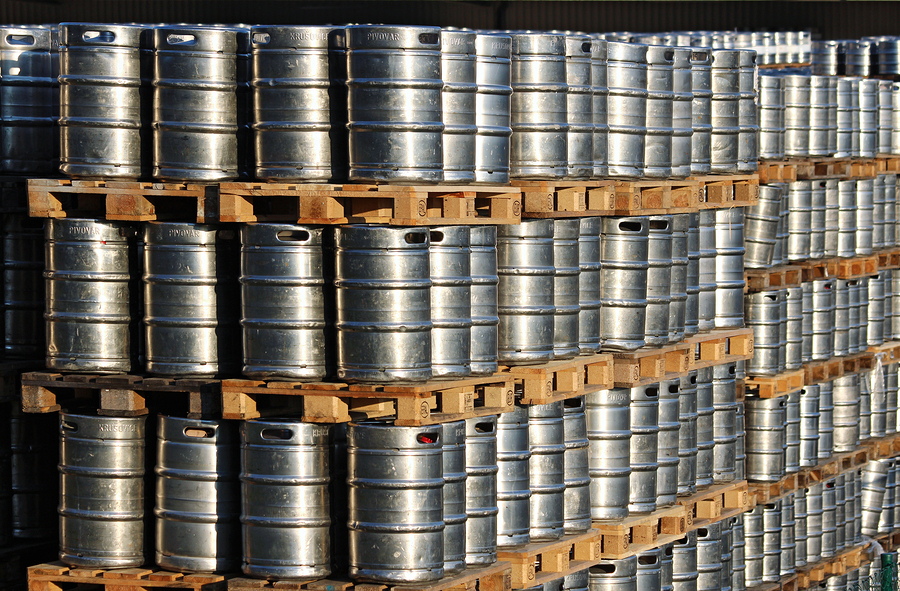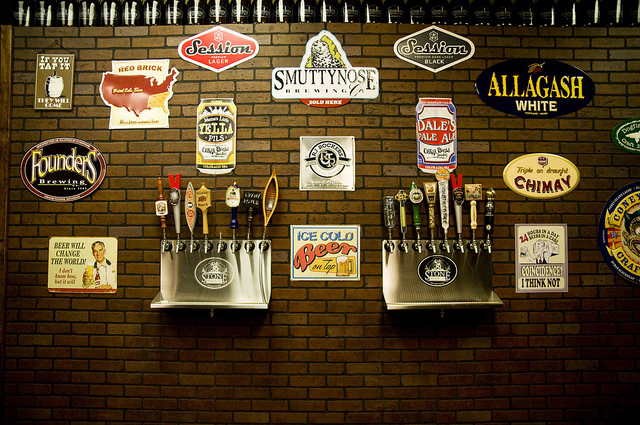“Craft is in a little bit of an identity crisis,” says Laura Bell, CEO of Bell’s Brewery in a recent Brewbound session. But what does craft really mean when macro brands acquire independent breweries? It’s tough to blind taste a Goose Island, Lagunitas, or Ballast Point beer and think, “this isn’t craft.” As someone who routinely asks his lovely wife to purchase beer at the grocery store only to have her return with ABInBev Sellout Brand IPA, I cringe a little and suffer through it, knowing my money went to fighting legitimate independent breweries in my neighborhood. But how would she have known?

The BA's new craft beer seal.
In a world where shelf space and tap handles are sacred ground, the craft-camouflage of big beer blending in with small and independent breweries has many consumers picking up the wrong thing.
Although the quality is real from these ex-craft brands, their marketing tactics, unfair business practices in the marketplace, and distribution incentives leave a bad taste in my mouth. Put simply, I vote with my dollar, and have been a consumer evangelist for some time.
It was only a matter of time until the Brewers Association would release a trademarked seal to allow qualifying indie brewery members to add to their products, much like how Trappist breweries of Belgium designate their authenticity. Honestly, I thought if it ever came to fruition it would be a slam dunk, where every small, traditional, and independent brewery would stop production, slap the seal on, and fight the good fight.
Boy was I wrong.
Fall of 2016 at the California Craft Beer Summit in Sacramento, I heard news that a British beer group, The Society of Independent Brewers Association (SIBA), had released a logo to affix to bona fide independent brewery product. At the event, I asked Julia Herz, Craft Beer Director at the Brewers Association (BA), if she thought the program looked like it was worthy of being adopted here. “We’re watching that with great fascination,” she admitted. “I mean, who knows what can happen. That model is certainly an interesting one to see...give it a year and see how it works.”
Two months short of that year, the Brewers Association announced their Independent Craft Brewer beer logo, taking the brewing world by surprise. The knee-jerk reaction from many scoffed at the design of the tall rectangular logo, others were concerned about what it means.
The logo, which features an upside-down bottle with the words “Brewers Association Certified INDE-PEN-DENT CRAFT” is meant to capture the spirit with which craft brewers have upended the beer industry. Unfortunately, the logo looks like the international sign for drain pour and the broken up text seems accidental. If the seal is affixed as per recommended size, takes up quite a bit of real estate on packaging. Seeing the already scrunched in lettering forced onto a beer label seems forced, sloppy, and not well thought out.
I polled thirty of my local breweries, twenty-seven of which said they will adopt the logo in some fashion. Three expressed aesthetic concerns over the clunky design, one of which stated they would have to redesign all of their labels just to fit it in and also be legible, something that is not in their budget. As of this writing a month after its debut, about a fifth of the BA’s members have downloaded the logo, showing early signs of a slow adoption.
Another concern is the Brewer’s Association’s definition of independent. “A brewery could be 100% owned by Coca-cola and still be considered independent. Also, you can be majority owned by private equity and still be considered independent, which in my opinion is not,” says family-owned Bootlegger’s Brewery and president of the Orange County Brewer’s Guild in Fullerton, California.
“Beer lovers have indicated that independent ownership is important to them,” says Paul Gatza, director of the BA. What about beer casuals? Do they really want or care about transparency? I polled my wife and her friends, who generally do the bulk of grocery store shopping, how it would affect their experience. “If you asked me to buy something with the Independent seal, there’s still a chance I might get you something you don’t like.” Knowing that my local store’s beer cooler well, I estimate 10% of product would actually qualify for the logo. “I would spend maybe ten seconds looking for the logo and if I couldn’t find one, I’d grab whatever was on sale,” she continued.
The corporate-exclusionary seal struck a different nerve with ABInBev who released a desperate sounding video with newly minted brewery sellout millionaires. The uncomfortable tone asked direct questions like “does the seal mean quality?” In the same way the Certified Organic logo can be on some bananas, it doesn’t necessarily mean one is better quality. Who can forget Goose Island’s big recall? How does that denote quality?
At another point in the video, Walt from Wicked Weed noted that, “we’re all making beer, we’re all brewers. We’re fighting wine and spirits and losing margin. We need to band together…” If a bar has great beer, a solid wine list, and a bartender that knows how to stir up a great cocktail, I’d call that a great bar. If a pub has a dozen taps of Goose Island, Golden Road, Elysian, and 10 Barrel (all ABInBev brands), guess what? I tend to think the distributor illegally gave the establishment the tap system in trade for guaranteed lines. How is that consumer choice? No wonder wine and cocktails are winning in their eyes.
Going back to my early days of beer in the nineties, I can still remember finding the Trappist logo on Belgian bottle from Chimay which lead me down a fun road of discovering what it meant, why certain beers had it, and why some didn’t. Just as that experience fueled my fire for great beer, one can only hope this new Independent seal does something similar for new generations of beer fans. Although I’m not a fan of how the logo looks, I’m sure the Brewer’s Association is far from finished and I would expect a big marketing push matched with a restaurant and store education program. The Independent Craft Seal is a start, but there’s still much work to be done.
If you liked this article, you may also enjoy: Is Craft Beer 'Pay to Play' the Needle That Bursts the Bubble?




.png?width=2254&height=703&name=longitude_logo_final_transparent%20(1).png)
Share This Post